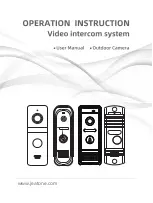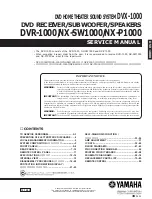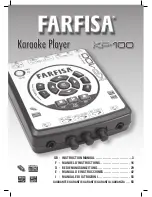
D. Surround
Channels:
1= Genera! requirements:
While there is little consistent practice in
specifying and implementing surround channels,
we can lay down the following requirements:
a. The total acoustical power delivered
by the ensemble of surround loud-
speakers should be equal to one of
the screen channels. There are pro-
bably not many surround channels
which meet this requirement, but
it is essential if the full impact
of surround information is to be
appreciated. While a 15-dB headroom
factor is a part of the power calcu-
lations for the screen channels, it
may be unreasonable to demand that
of the surround channel. Thus, a
requirement that the surround channel
be able to produce a level in the
house of 95 dB-SPL will suffice. In
the case of the distributed 200 mm
(8") speaker system, a level of
92 dB is deemed sufficient.
b. The quantity of surround loudspeakers
should be sufficient so that listeners
are not aware of only one of them.
This usually means a minimum of
eight: three each on the side walls
and two on the back wall.
c. The surround loudspeakers should
exhibit wide dispersion so that the
entire audience area can appreciate
even coverage across the frequency
range.
d. Surround loudspeakers should be
unobtrusive and not interfere with
theater decor. This requirement may
run counter to some of the acoustical
requirements in that size is related
to system efficiency.
The JBL 4401 monitor loudspeaker works
extremely well since a small number of them,
usually less tham 12, will provide the desired
level in many houses. The MC 4401 mounting
cradle provides a convenient method of wall-
mounting and angling the 4401 system. Table IV
presents details of surround loudspeaker
selection.
The use of multiple 200 mm (8") loudspeakers
has been favored by Dolby Laboratories. While the
hardware costs may be reasonable, the labor costs
for this approach are accordingly higher. For this
type of system, the JBL 8140 co-motional trans-
ducer will be a logical choice. The baffles used
in such an installation should ideally be con-
structed according to the transducer manufac-
turer's plans or recommendations so that low-
frequency response will be adequate. A lower cost
approach calls for using one of the many standard
tilted front enclosures. As a rule, these are too
small in volume for proper low-frequency response,
and the client should understand this at the outset.
The 4671 theater system is recommended for
high-power surround use. With an efficiency of
3.5%, relatively few of these units are required.
They would normally be specified when the entire
theater reproduction system was called upon to
produce levels in the 105-to-110-dB range.
2. Powering the surround channel:
Figure 6 presents details of the implementa-
tion of the surround channel. At C through E, we
show details of the electrical distribution. Depen-
ding on the number of surround loudspeakers, the
hook-up will be series-parallel, and the resulting
impedance can usually be held to no less than 4
ohms. An amplifier should be chosen whose 4-ohm
power rating will not be exceeded. In some cases,
the JBL model 9375 line matching autotransformer
will be useful in maintaining the desired im-
pedance. For the 200 mm (8") loudspeakers, a
70-volt distribution system should be used. See
JBL Technical Note, Volume 1, Number 2, for
details of this method.
E. Subwoofer Systems:
1. Background:
Universal's introduction of "Sensurround"
during the seventies brought special effects very-
low-frequency channels into the motion picture
theater. Typically, these channels cover the range
from 20-25 Hz up to 40-50 Hz. Quite high acoustical
power output is required, since the ear is relatively
insensitive to extremely low frequencies.
2. Implementation:
Most installations of subwoofers are dictated
by the requirements of particular screenings, and
instructions will generally come from the studios
or through the film distributors. The Dolby model
CP200 processor provides a low-frequency output
that may be used to drive a subwoofer channel
directly.
Table V presents data on selecting the
number of subwoofer modules needed for parti-
cular sound levels in theaters of different
volumes. The enclosure recommended here is the
4518. Its specifications with the 2245H LF driver
are detailed in column 4 of JBL Technical Note,
Volume 1, Number 1. It is important to provide
adequate and stable power for proper subwoofer
operation. Whenever possible, the amplifiers
should be located at the loudspeakers themselves.
Note that as the number of modules is
doubled, the sound pressure increases 6 dB.
Three dB are due to the doubling of power


































